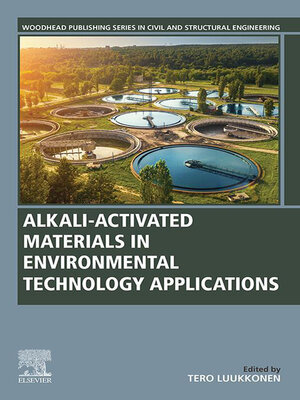Alkali-Activated Materials in Environmental Technology Applications
ebook ∣ Woodhead Publishing Series in Civil and Structural Engineering
By Tero Luukkonen

Sign up to save your library
With an OverDrive account, you can save your favorite libraries for at-a-glance information about availability. Find out more about OverDrive accounts.
Find this title in Libby, the library reading app by OverDrive.



Search for a digital library with this title
Title found at these libraries:
| Library Name | Distance |
|---|---|
| Loading... |
Alkali-activated materials, including geopolymers, are being studied at an increasing pace for various high-value applications. The main drivers for this emerging interest include the low-energy, low-cost, and readily up-scalable manufacturing process; the possibility to utilize industrial wastes and by-products as raw materials; and beneficial material properties comparable to conventional materials. It has already been verified that alkali-activated materials are very versatile in environmental technology applications for pollution control. The current research in the field focuses on advanced manufacturing methods, material properties, and applications, for example, additive manufacturing, modification of surface chemistry, CO2 capture, and green catalysis.
Alkali-Activated Materials in Environmental Technology Applications discusses what novel possibilities alkali-activated materials provide in comparison to conventional materials (such as high-temperature ceramics, synthetic zeolites, or organic polymers). The specific environmental applications that are covered include water and wastewater treatment, air pollution control, stabilization/solidification of hazardous wastes, and catalysts in chemical processes. In addition, preparation methods, material properties, and the chemistry of alkali-activated materials are revisited from the viewpoint of environmental technology applications. This book also discusses how well alkali-activated materials fit under the concepts of green chemistry and circular economy and how the life cycle analysis of these materials compares to conventional materials. - Provides detailed information on preparation methods, material properties, and chemistry of alkali-activated materials for environmental technology applications - Covers applications in water and wastewater treatment, air pollution control, solidification/stabilization of hazardous wastes; antimicrobial materials, and catalysis - Discussed the performance of alkali-activated materials against conventional materials such as high-temperature ceramics, synthetic zeolites, or plastics - Features case studies and bench/pilot-scale studies







